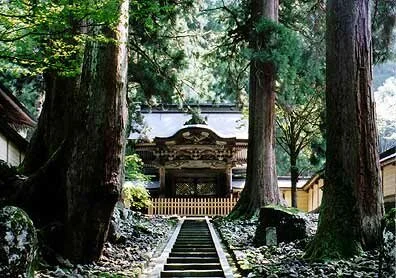Thresholds in community formation
I’m recently taken with the idea of “liminality” in the concept of community formation. Taken from readings in Victor Turner’s The Ritual Process, liminality is a central component of an individual’s passage from one state to another, referring to the middle condition where the person is no longer who they were, but have not yet transitioned into what they will become.
Turner pulls from the earlier work of Arnold van Gennep on rites de passage to explore three phases to a transition; separation, margin and aggregation.
This exploration of liminality by Turner is within the context of his larger theorization on communitas – or the sense of community or belonging that is unstructured and distinct from groups with an “area of common living”. This, for me, is where these theories become interesting in the context of designing for community; elements of communitas seem to be what we are designing for, yet the “rituals”, routines and formats of modern gatherings bear few of the attributes that would support this state of liminality.
There would seem to be a need for a strong cultural component to act as a framing for this type of transition – a larger framing in which could act as a container for the individual and community; a context within which the individual goes through a process of submission, surrendering in order to transition to a new social state.
I believe that there could be a larger psychological threshold, or liminal state, that is part of a longer process of transition, but that there could easily micro-transitions that could be designed into community interaction. Japanese architecture and landscape design paid a great deal of attention to transitional spaces and thresholds, with gates and low-hung doors meant to pattern a psychological response to transitioning from one state to another on passage.
In designing both educational and community processes, I am curious in how deeply the sense of self needs to be challenged in order to induce a liminal state of “becoming” in order to forge a more connected self, and how that depth affects the durability of the community or sense of identity for the learner what they come out the other side. Part of this question is exploring the role of ritual, and of course, it all relates back to the role of identity formation I began to explore here.



Love this exploration Aaron, and will come back here to read it again and chime in with thoughts and comments.
In the few minutes I have now, I did a quick read of the wikipedia entry for liminatlity. It is interesting to see that this term is getting appropriated and expanding to new contexts and domains of usage:
“More recently, usage of the term has broadened to describe political and cultural change as well as rituals.[3] During liminal periods of all kinds, social hierarchies may be reversed or temporarily dissolved, continuity of tradition may become uncertain, and future outcomes once taken for granted may be thrown into doubt.[4] The dissolution of order during liminality creates a fluid, malleable situation that enables new institutions and customs to become established.”
Liminality, then, can be considered a transitional “in between” state not just of individuals, but could also be of a community or culture, collectively.
In terms of an educational and community processes, in particular when organizing principles of these processes include collaborative & collective intelligence, pattern language and shared experience, it might be appropriate to think of the rituals that induce a liminal state as something that can be designed at a group level. In other words, in a education path, the whole cohort or class could experience and move through a liminal state together. It seems that would likely increase the durability and sense of identity you speak to in the last paragraph of your blog.
Love this exploration Aaron, and will come back here to read it again and chime in with thoughts and comments.
In the few minutes I have now, I did a quick read of the wikipedia entry for liminatlity. It is interesting to see that this term is getting appropriated and expanding to new contexts and domains of usage:
“More recently, usage of the term has broadened to describe political and cultural change as well as rituals.[3] During liminal periods of all kinds, social hierarchies may be reversed or temporarily dissolved, continuity of tradition may become uncertain, and future outcomes once taken for granted may be thrown into doubt.[4] The dissolution of order during liminality creates a fluid, malleable situation that enables new institutions and customs to become established.”
Liminality, then, can be considered a transitional “in between” state not just of individuals, but could also be of a community or culture, collectively.
In terms of an educational and community processes, in particular when organizing principles of these processes include collaborative & collective intelligence, pattern language and shared experience, it might be appropriate to think of the rituals that induce a liminal state as something that can be designed at a group level. In other words, in a education path, the whole cohort or class could experience and move through a liminal state together. It seems that would likely increase the durability and sense of identity you speak to in the last paragraph of your blog.
I look forward to exploring and learning more on these concepts with you!
As we bow down to go through each new door of self and community, how do we bring/share with those most important to us? And more importantly how do we share to build something better in our new communal state?